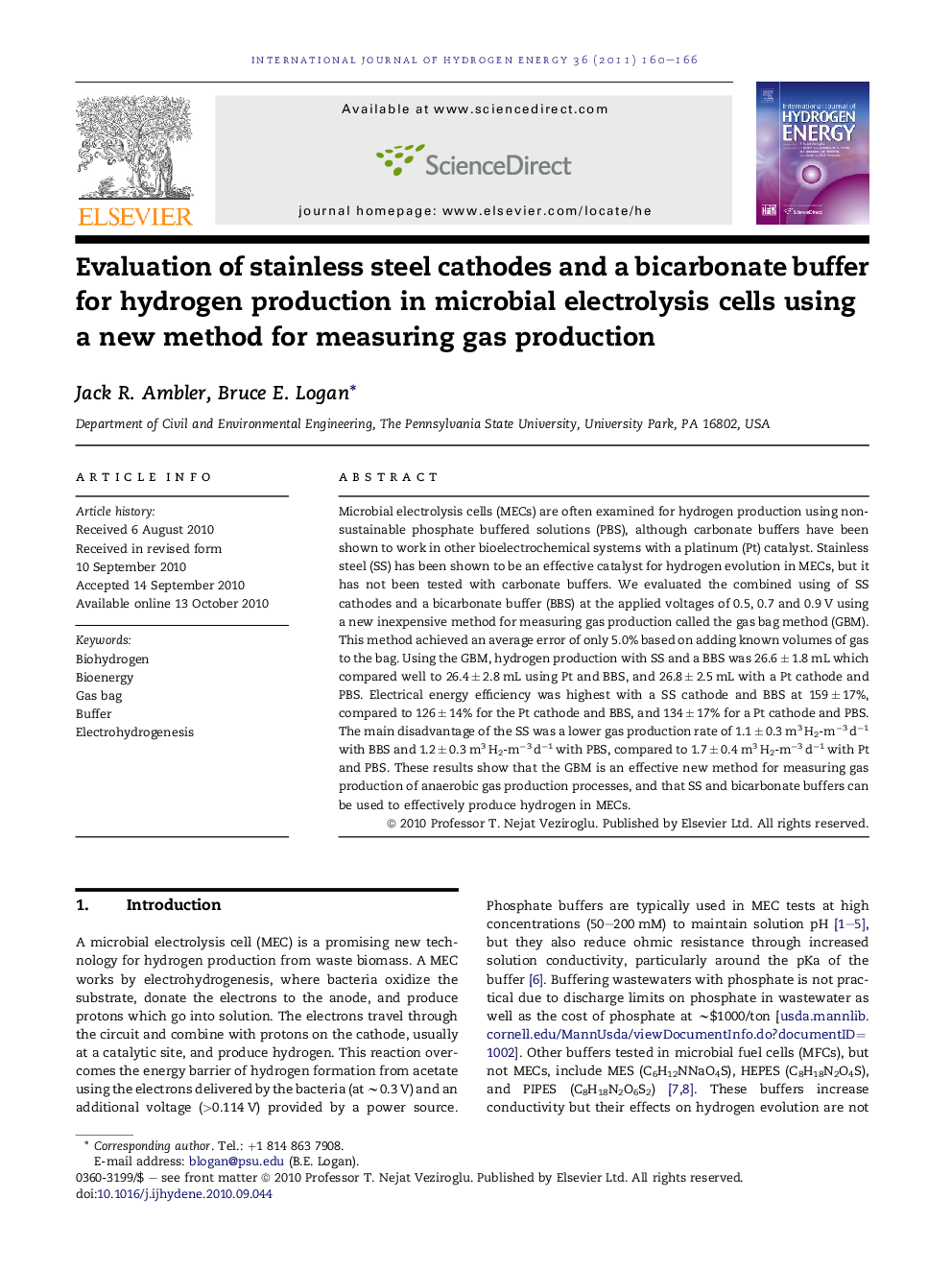| Article ID | Journal | Published Year | Pages | File Type |
|---|---|---|---|---|
| 1277763 | International Journal of Hydrogen Energy | 2011 | 7 Pages |
Microbial electrolysis cells (MECs) are often examined for hydrogen production using non-sustainable phosphate buffered solutions (PBS), although carbonate buffers have been shown to work in other bioelectrochemical systems with a platinum (Pt) catalyst. Stainless steel (SS) has been shown to be an effective catalyst for hydrogen evolution in MECs, but it has not been tested with carbonate buffers. We evaluated the combined using of SS cathodes and a bicarbonate buffer (BBS) at the applied voltages of 0.5, 0.7 and 0.9 V using a new inexpensive method for measuring gas production called the gas bag method (GBM). This method achieved an average error of only 5.0% based on adding known volumes of gas to the bag. Using the GBM, hydrogen production with SS and a BBS was 26.6 ± 1.8 mL which compared well to 26.4 ± 2.8 mL using Pt and BBS, and 26.8 ± 2.5 mL with a Pt cathode and PBS. Electrical energy efficiency was highest with a SS cathode and BBS at 159 ± 17%, compared to 126 ± 14% for the Pt cathode and BBS, and 134 ± 17% for a Pt cathode and PBS. The main disadvantage of the SS was a lower gas production rate of 1.1 ± 0.3 m3 H2-m−3 d−1 with BBS and 1.2 ± 0.3 m3 H2-m−3 d−1 with PBS, compared to 1.7 ± 0.4 m3 H2-m−3 d−1 with Pt and PBS. These results show that the GBM is an effective new method for measuring gas production of anaerobic gas production processes, and that SS and bicarbonate buffers can be used to effectively produce hydrogen in MECs.
